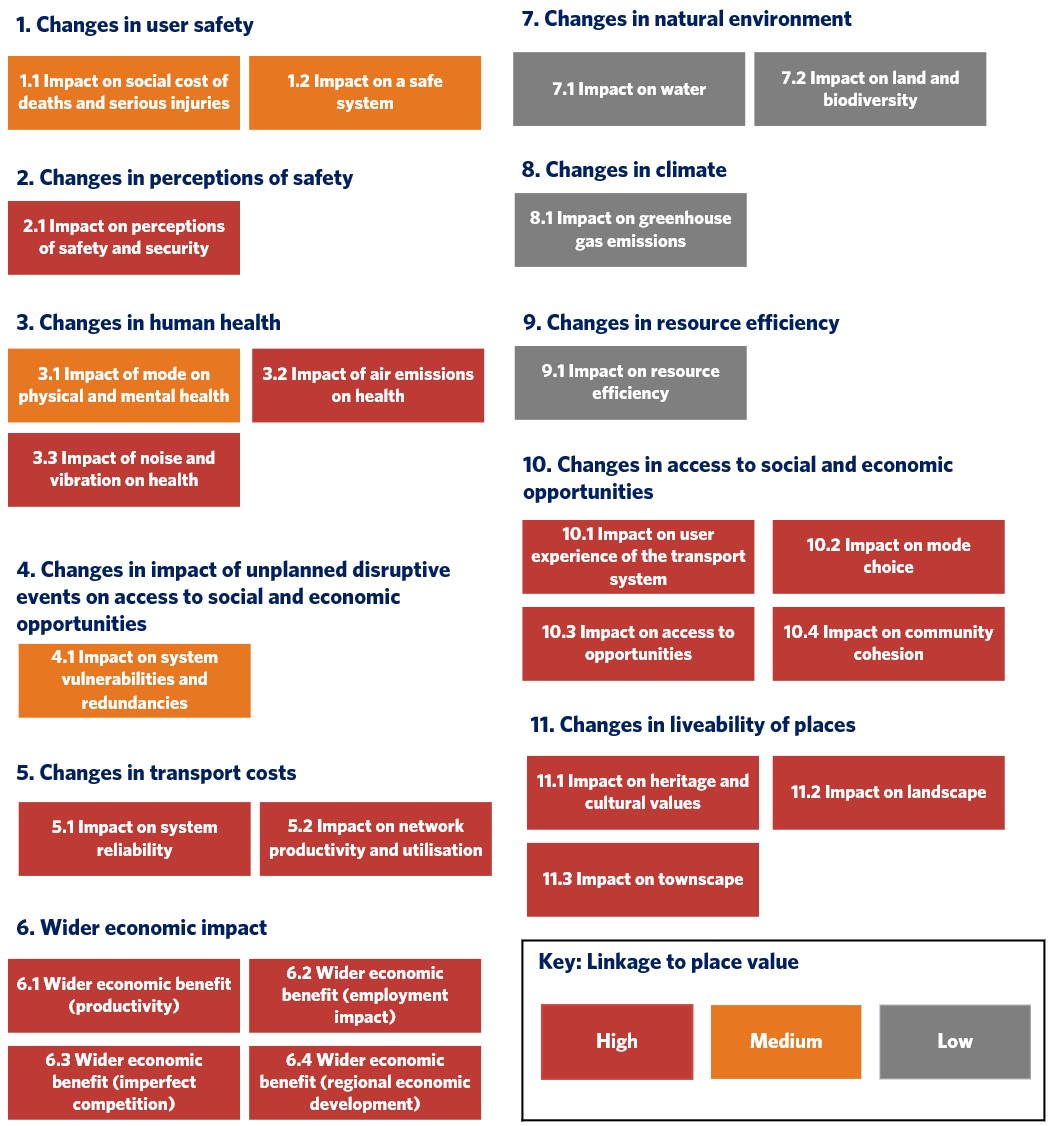This benefit cluster relates to how transport connects to the liveability of place. Liveability extends far beyond the transport system and includes a wide range of factors, many of which are not related to this land transport benefits framework. However, the transport system does have a significant impact on liveability and can either improve or detract from the quality of ‘place’.
The liveability of a place can relate to its form, character, amenity, convenience and proximity to other places valued by locals and visitors. Liveability of place includes how we plan, manage and grow our towns and cities, particularly in relation to transport – how people move through places to reach the destinations that matter to them. It is about how well the attributes of a location enhance the wellbeing of the people who live, work or visit there. When the liveability of a place changes, it can be due to local context change (the location reflects the diversity of the population), the value individuals place on the location, the number of people there and the variety of needs and preferences of people that are met there.
The One Network Framework (ONF), which was introduced in 2020 and will be fully implemented for the 2024–27 NLTP period, presents the concept of ‘movement’ and ‘place’. The ONF, which is aligned with the benefits framework, will help categorise the different functions that roads and streets have and will contribute to assessing changes to liveability. While the ‘movement’ function of a road or street is to move people and goods through a corridor, the ‘place’ function relates to the extent to which a road or street is a destination in its own right and supports activity (including economic activity). There is a natural tension between interventions aimed at saving time passing through a corridor and those aimed at increasing how long people dwell in a place for social and economic benefits.
As a signatory of the New Zealand Urban Design Protocol, Waka Kotahi values urban design principles, which span from the placement of transport networks and land use at the regional level, to the detailed design of streets and public spaces at the local level. In the context of Waka Kotahi projects, urban design generally seeks a balance between transport improvements and the need to link to the local context, and maintain or enhance the amenity and liveability of the local community, which is reflected in the benefits included in this cluster.
New Zealand Urban Design Protocol(external link)
Many of the benefits in the framework are focused on movement but can also be relevant in some way to the concept of place, such as 2.1 Impact on perceptions of safety and security, and 10.3 Impact on access to opportunities. The benefits included in this cluster are specifically related to concepts around liveability and place that are not already recognised elsewhere in the framework. See the diagram below for an overview of how other benefits might contribute to the liveability of place benefit cluster.
2.1 Impact on perceptions of safety and security
10.3 Impact on access to opportunities

Benefits that contribute to liveability of place
View larger image [JPG, 236 KB]
Three benefits sit beneath this benefit cluster:
11.1 Impact on heritage and cultural values
> Return to the overview of the Land Transport Benefits Framework